"There's nothing better": Google's Pixel 9a is my best-reviewed affordable Android phone of 2025
Looking for an affordable Android handset? Google's Pixel 9a is a winner


With many aspects close to flagship grade, the Pixel 9a feels like such a fully-formed mid-level Android offering that spending more might be totally unnecessary for many. Sure, it's a little chunky and there's no true zoom camera, but that aside it's a 2025 champion with a refreshing new design. There's obvious competition from Nothing and Samsung in terms of camera offerings and finish, but for my money the Google nails it and is the choice pick.
-
+
Great performance and battery life is closer to flagship levels
-
+
Minimal camera bump design is a refreshing approach
-
+
The camera duo is top quality – as are photo features
-
-
It's a fairly chunky design compared to some rivals
-
-
No zoom cameras presents inevitable limitations
-
-
Screen bezel could be more trim and refined
Why you can trust T3
It's rare for a fairly affordable handset to feel on par with the best Android phone flagships. Yet here I am, weeks into reviewing Google's Pixel 9a, and it's already my favourite budget Android handset of the year. Which has me pondering "why pay any more?"
This review falls a little later in the calendar than expected, however, as Google's initial plans for the Pixel 9a's release were pushed back – and for good reason – but that hold-up hasn't had any negative effect on the quality of this handset.
Not only that, the Pixel 9a brings a refreshing design that squashes the camera enclosure to a near-flat format, the likes of which I've not seen in, well, yonks. Sure, it's a bit of a chunky design, but here's why I think there's nothing better in this category.
How much does the Pixel 9a cost?
The Google Pixel 9a is on sale right now, priced at £499 in the UK, $499 in the US, or AU$849 in Australia. That maintains its year-on-year price over the previous Pixel 8a, which is great to see in today's market.
It's available in four colourway options: Obsidian, Porcelain, Peony, Iris. Or, as I would call them, 'black', 'white', 'pink' and 'blue'. I've got the classic black for review, plus a separate case, but personally find blue most enticing.
What's new in the Pixel 9a?
- Larger display at 6.3-inch (up from 6.1-inch)
- Bigger battery capacity at 5100mAh (up from 4500mAh)
- Increase in charging speeds to 23W wired (up from 18W)
- Latest Google processor in Tensor G4 (upgraded from G3)
- New camera duo: 48-megapixel main and 13MP wide (from 64MP/13MP)
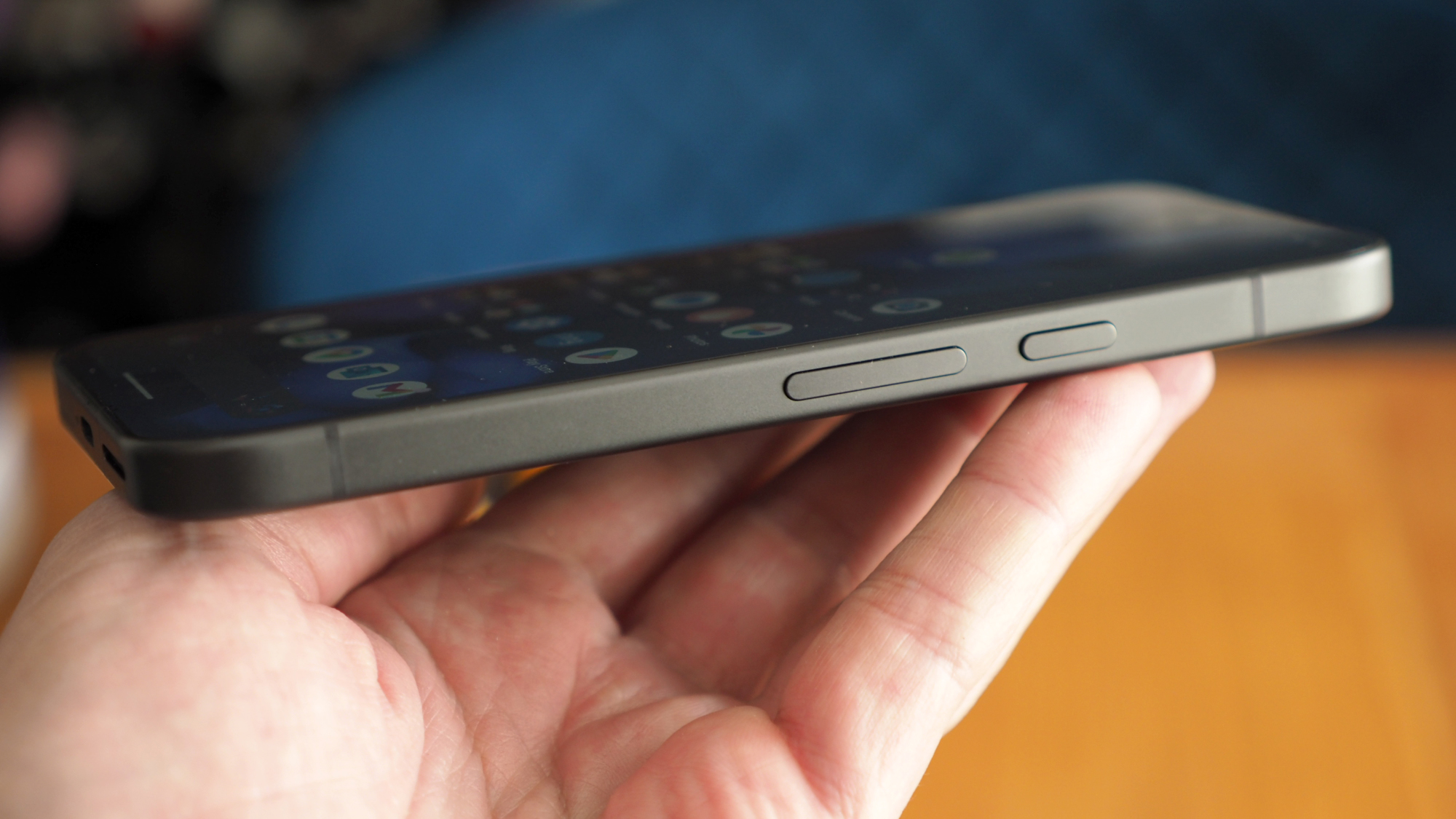
I mean, what isn't new? The Google Pixel 9a brings a different design over its Pixel 8a predecessor – one that, especially owing to the new camera arrangement, looks different to its bigger-brother series 9 models, such as the Pixel 9 Pro XL.
However, the dimensions aren't wildly different to the last generation. The thickness remains one and the same, at 8.9mm, while the body's width and height is a few millimetres larger on account of a new screen implementation.
With a 6.3-inch OLED panel as its main face, this 'a' series model is the biggest in the series to date. Not a giant by any means, though, as it's just 0.2-inches on the diagonal greater – and able to deliver more screen brightness too.
Inside, there's the latest Google Tensor G4 processor, which from an out-and-out performance perspective is at the same level as Google's other flagship devices. The key difference is that the 8GB RAM here can't match the 12GB of higher-positioned models in the range.
The marginally bigger size also means a marginally more capacious battery, at 5,100mAh, which is a decent percentage increase over the 4500mAh cell of the earlier 8a. It shows in use, too, which I'll get to later in this review.
Where's the camera bump gone?
- IP68 dust- and water-resistant
- Colours: Obsidian, Porcelain, Iris, Peony
- Size: 154.7 x 73.3 x 8.9mm / Weight: 186g
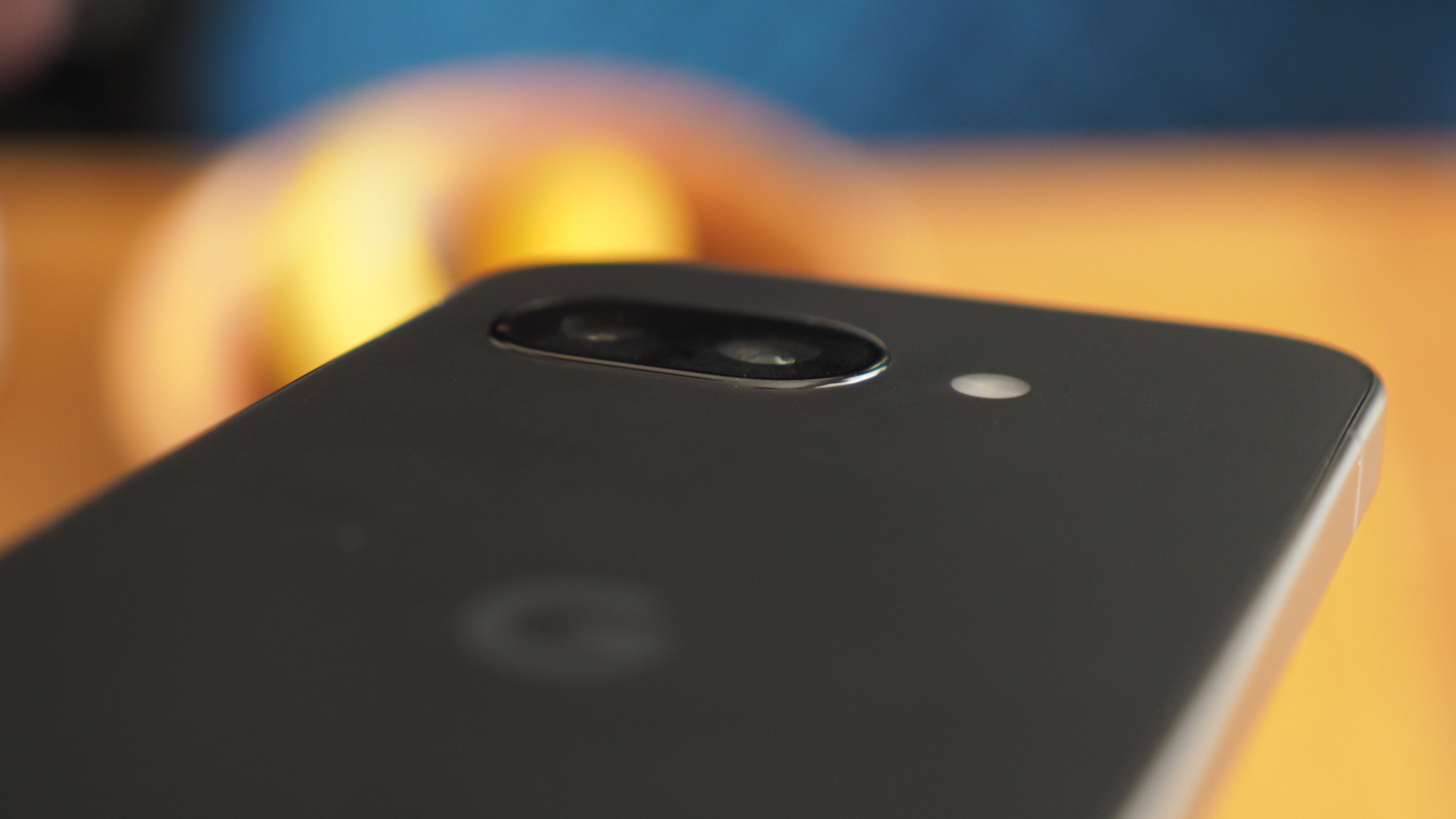
As you can see in my steeply angled shot above, the Pixel 9a does its damnedest to remove the camera bump that's so prevalent on many of the best phones of today. It's a fresh look, but a simple yet important design statement.
It's even more interesting given the significant camera 'bar' design that became such an icon of Google's Pixel phone design. But not so here, this is the new generation – and I'm all for it.
That said, the lack of a camera bump doesn't really make the 9a feel quite as diminutive as I'd hoped. It's a fairly chunky design, especially when adding a case (sold separately) – but that sets the camera's profile as concave once fitted in place.
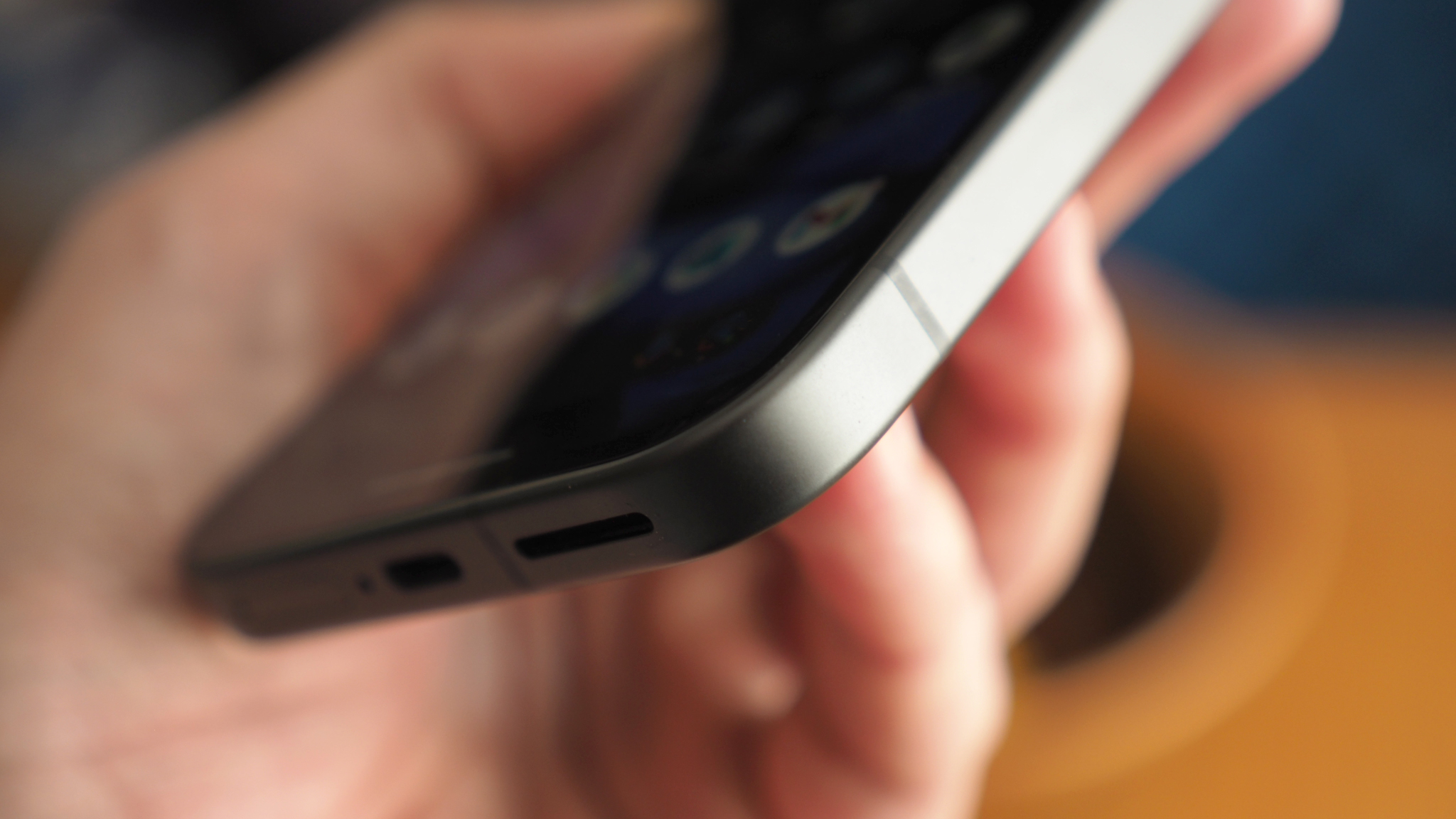
I'm aware that not everyone loves the Pixel 9a's design, but I think it's simple and refined – in a kind-of cutesy way. Many people I've shown the phone to have actually assumed it's an iPhone – and I can see some of the similarities. Not in the camera department, though, where Apple's 16e features a single circular optic.
In terms of comfort factor, I've found the soft-feel of the Pixel 9's rear coating is great, not too slippery like the less good-looking (and, in my opinion, too reflective) Samsung A56. Fingerprints are something of a bother with the Google's case (if you buy one), but not so much on the handset itself.
Is the Pixel 9a's display any good?
- 6.3-inch OLED panel featuring:
- 120Hz refresh rate
- 1080 x 2424 resolution
- 1800 nits brightness (2700 nits peak)
- Corning Gorilla Glass 3 protection
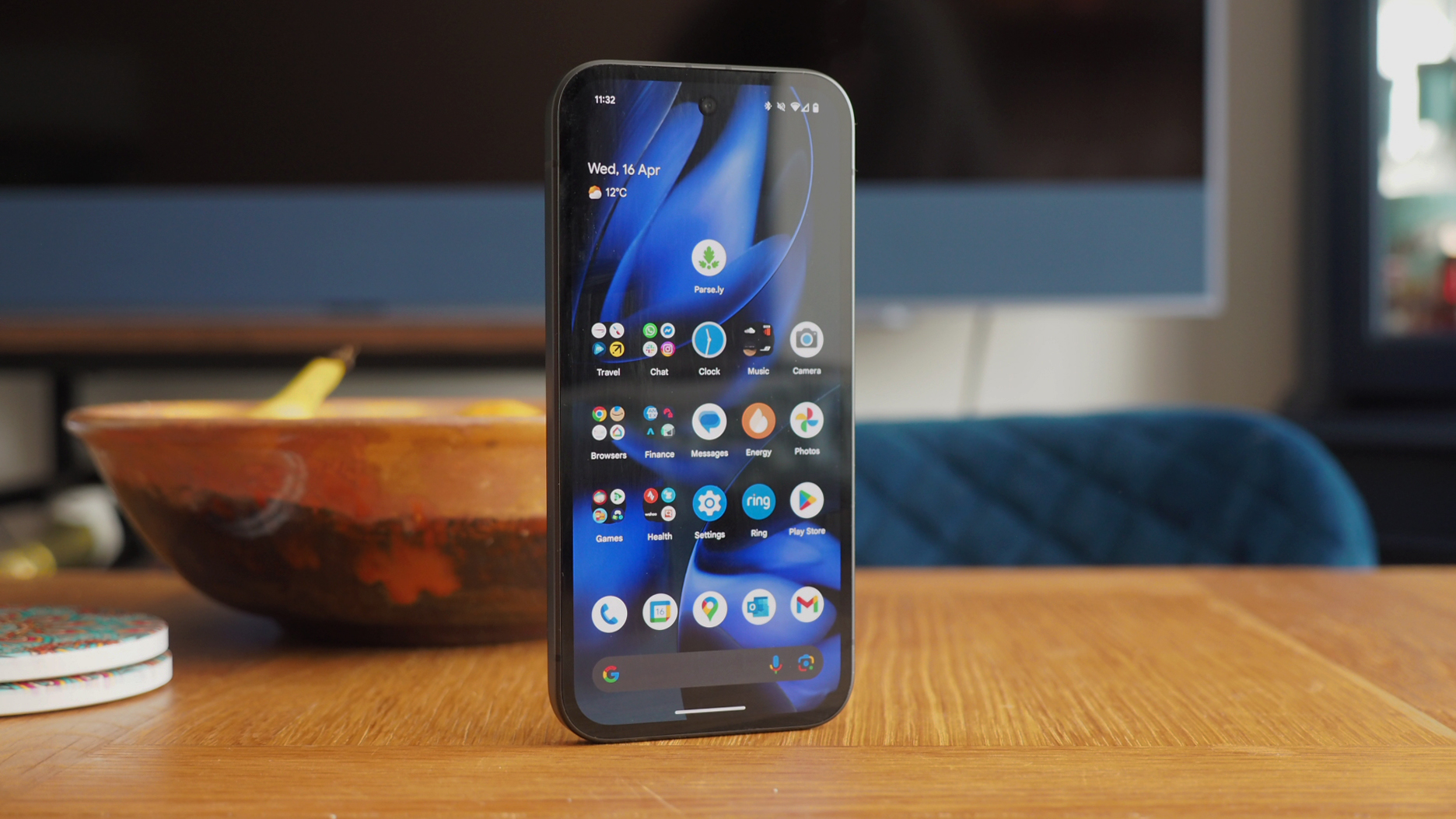
Fingerprints aren't a bother on the Pixel 9a's display, though, thanks to brightness that can cut through as needed. It's knocking on the door of flagship levels for various specification reasons, and serves a mid-level handset such as this extremely well.
I've had brighter panels on review in recent months, but those have been much pricier handsets. Sometimes this Google is gentle with pushing its auto-brightness levels, but that conservative approach makes sense for battery life – and it's easy to tweak as you wish anyway.
Besides, with a 120Hz refresh rate, more resolution than you really require at this scale, and great contrast from the OLED format, it's a great panel. There's an Always-On Display option for handling notifications with ease, while colours in the Adaptive mode have always looked punchy yet not overworked to my eyes.
Any complaints? While I think the 9a has some close-to-flagship features, the amount of bezel surrounding the display remains more considerable than some competitors. The panel's integration is quite the opposite, though, with this wonderful smooth-edge rolloff that helps the screen look 'elevated', while remaining comfortable in a palm grip.
Is the Pixel 9a as good as the Pixel 9?
- Google Tensor G4 processor, 8GB RAM
- 5100mAh battery, 23W wired charging / 7.5W wireless
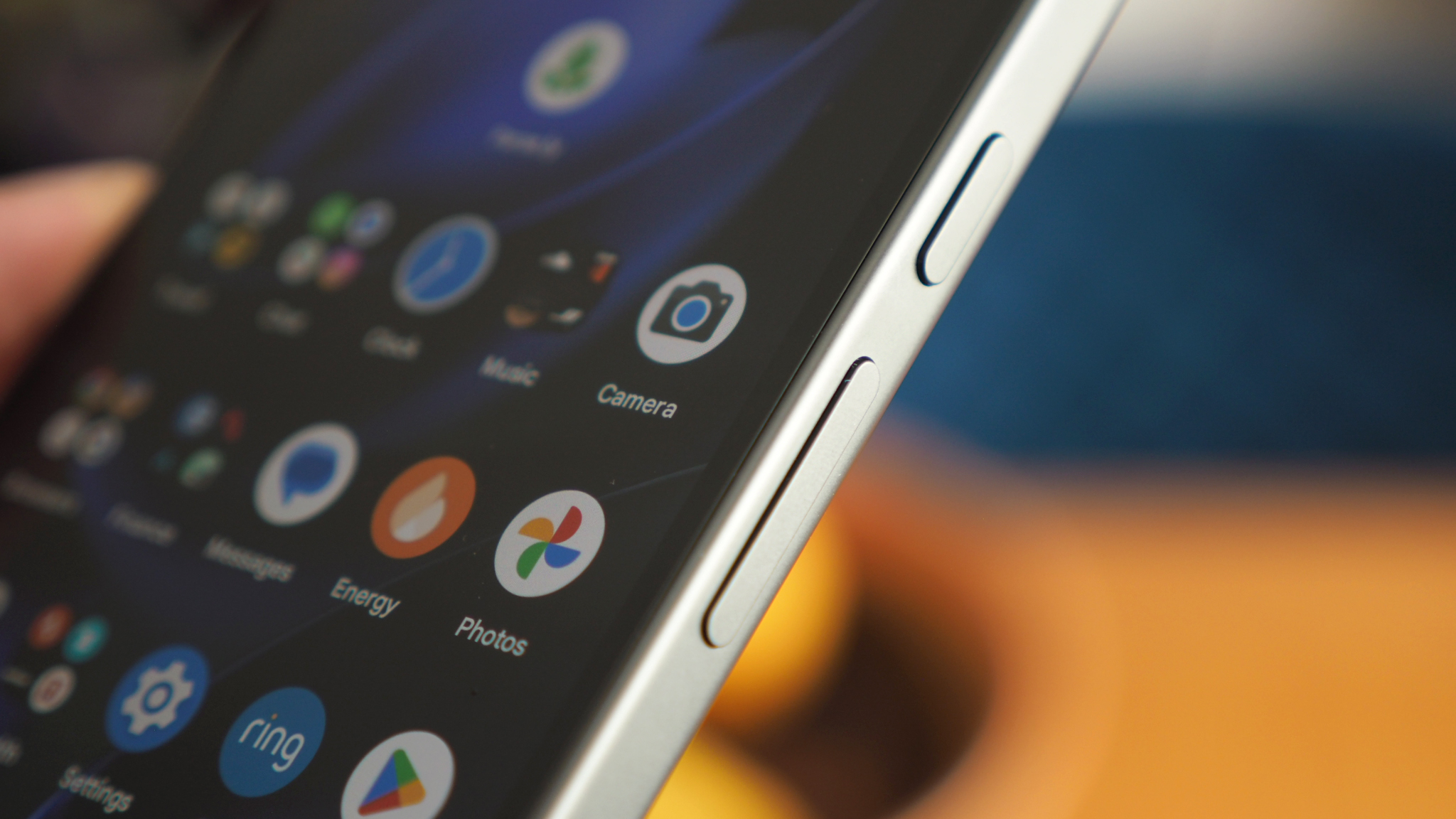
In terms of performance, the Google Pixel 9a features the latest Tensor G4 processor at its core, just as you'll find in other higher-priced and more premium current Pixel handsets. It's only the volume of RAM available that makes the 'a' series model any less capable – so the compromise is minimal.
Not that I've really felt that in use. Whether multi-tasking across multiple apps, flicking into playing some games, or treating the Pixel 9a just as I would a flagship Samsung Galaxy handset, it's a really impressive performer at this price level.
The battery life is really solid, too, and paired with the latest Android 15 software I've been getting an easy 16 hours of use without hitting the red zone. That it's a larger battery capacity than its predecessor is clearly a benefit. Shame the charging speeds remain slow, though, despite being quicker than the last generation!
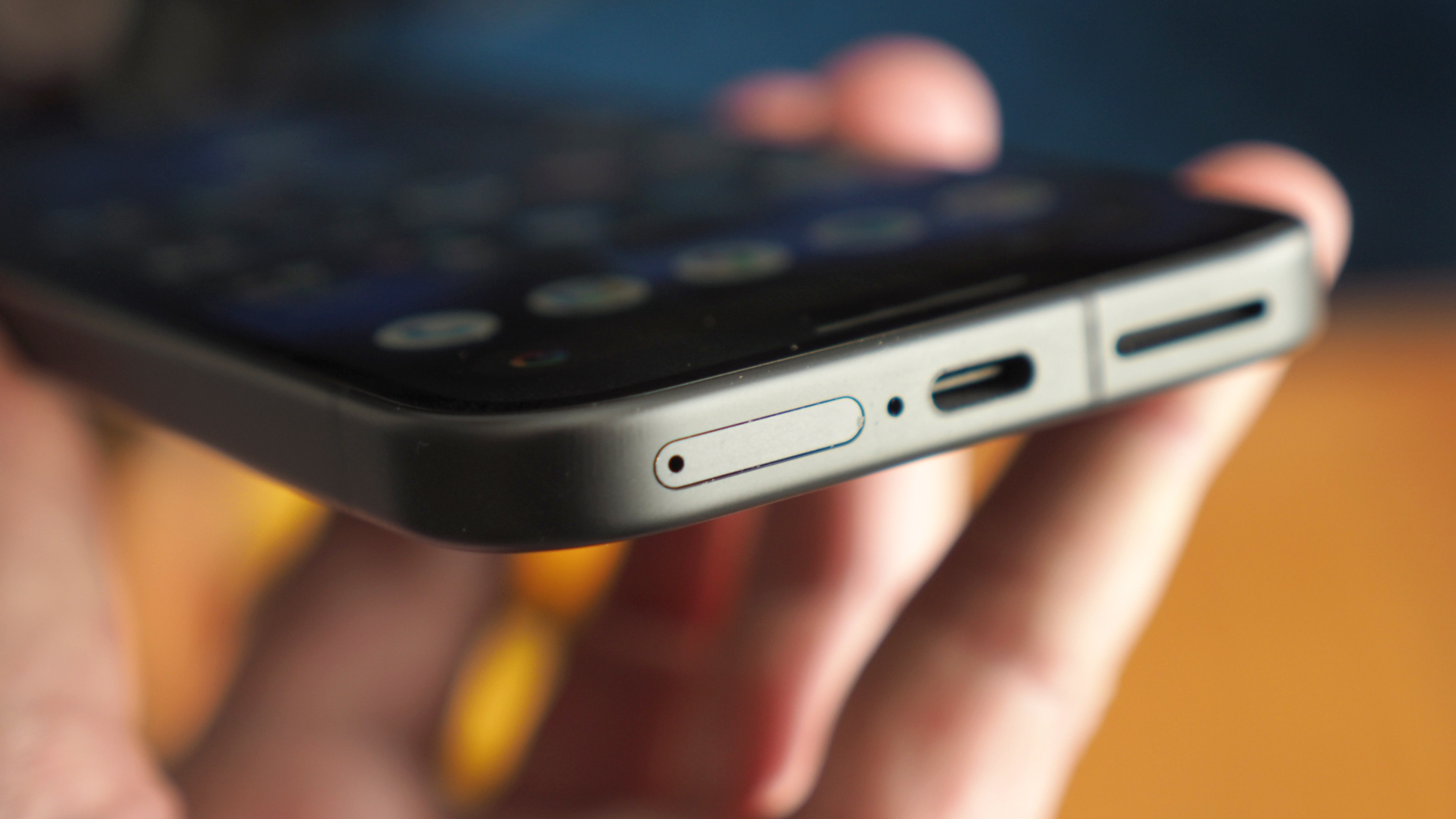
Ultimately, we're all spoiled with just how powerful handsets have become. But Google is at the forefront in not creating chasms of division across its devices. And the Tensor G4 chip here is great – not technically quite as adept as Apple's A18 in raw processor and graphics terms, but in an Android ecosystem it works like a dream.
Tensor is also designed with artificial intelligence (AI) in mind, which Google features in abundance – with a month of Gemini Advanced included in your purchase, adding things like Veo 2 video creation via text prompts – but without forcing it upon you at every turn.
Gemini is going to evolve rapdily and Google therefore wants it on all its hardware platforms, which is why having Tensor as the baseline makes sense. And with Android 15 promising 7 further upgrades, there's plenty of future-proofing and the assurance of new feature drops to come – whatever those may be (but surely AI-enhanced, I'd wager).
Are the Pixel 9a's cameras good?
- Dual rear cameras:
- 25mm main: 48MP, f/1.7, OIS
- 20mm wide: 13MP, f/2.2
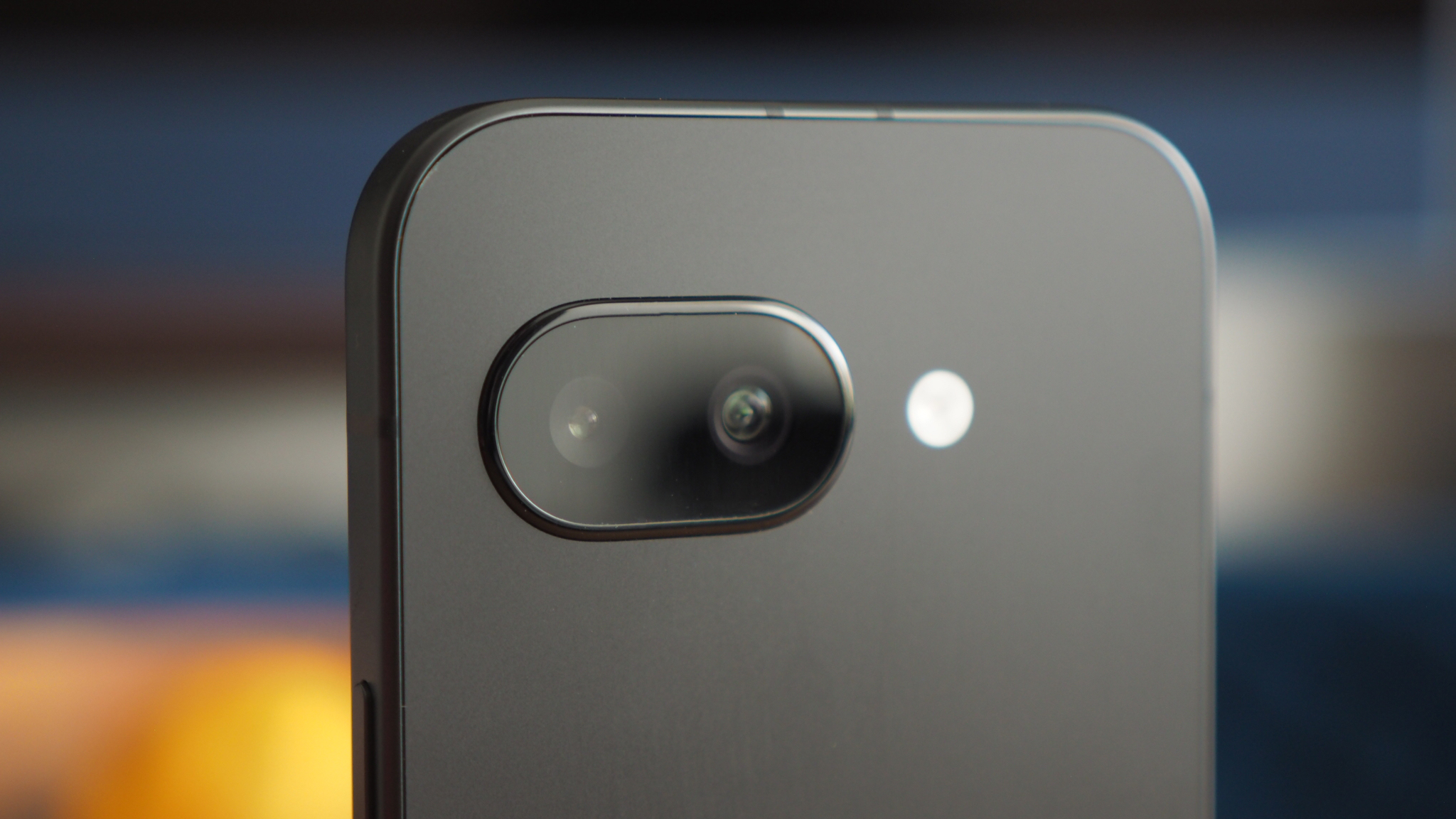
A lot of those AI features are actually most beneficial in the cameras department, where there are many practical applications. Whether (and these ones are self-explanatory) Auto Frame or Photo Unblur, there are a bunch of handy options.
Magic Editor, meanwhile, means you can remove objects in almost Photoshop-like style – something I use often even in screengrabs to remove sensitive information. These higher-end features benefit from AI on the edge, in the cloud, so you'll want a Wi-Fi or mobile connection for those.
But the AI features aren't the full make-up of the 9a's camera suite. Despite being a fairly simplistic dual offering, this duo of sensors and lenses is very accomplished. For me it's the simplicity in use: from press-to-focus – where the subject-tracking kicks in, showing real-time focus around your chosen subject – to the automated processing.









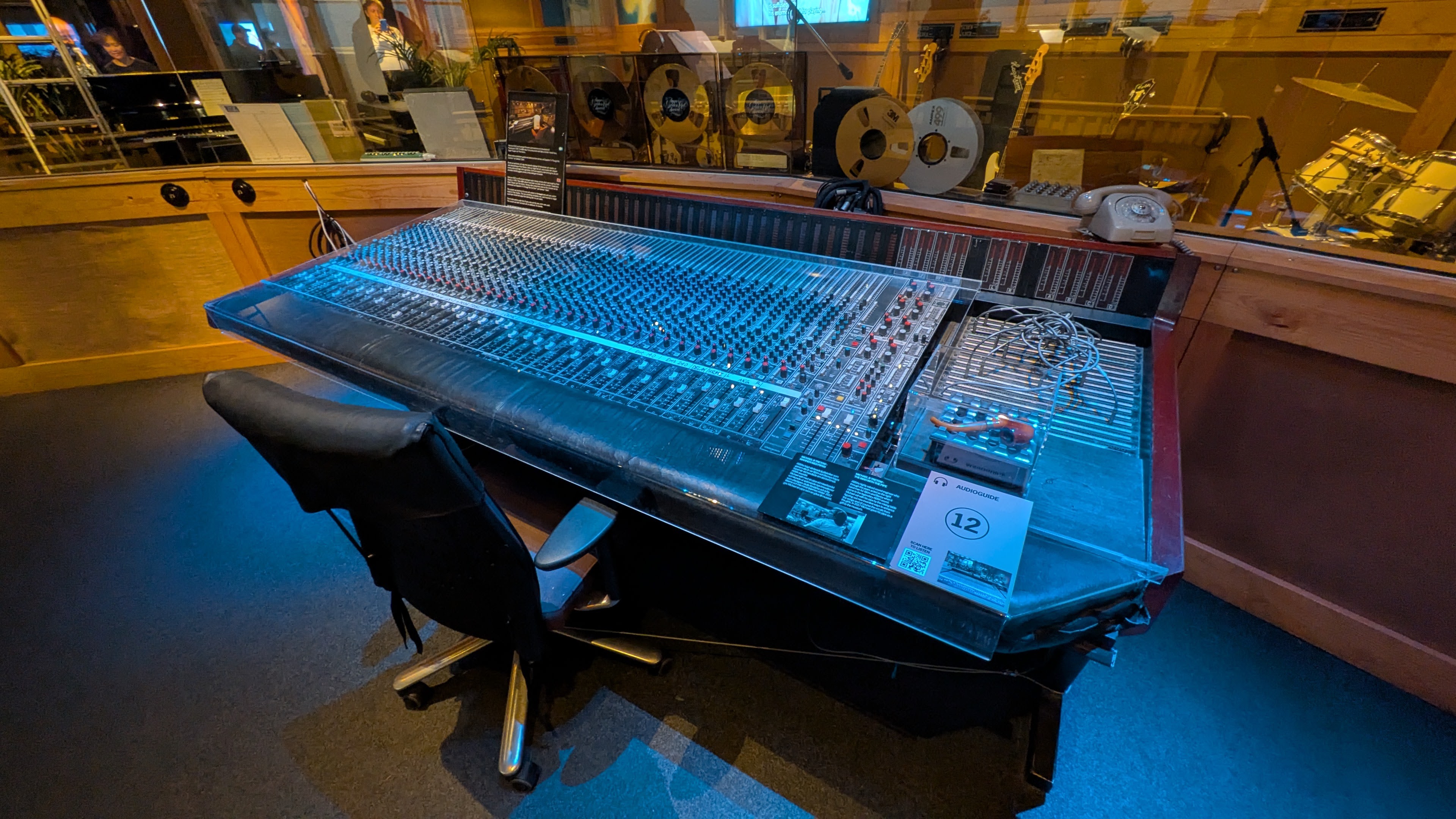
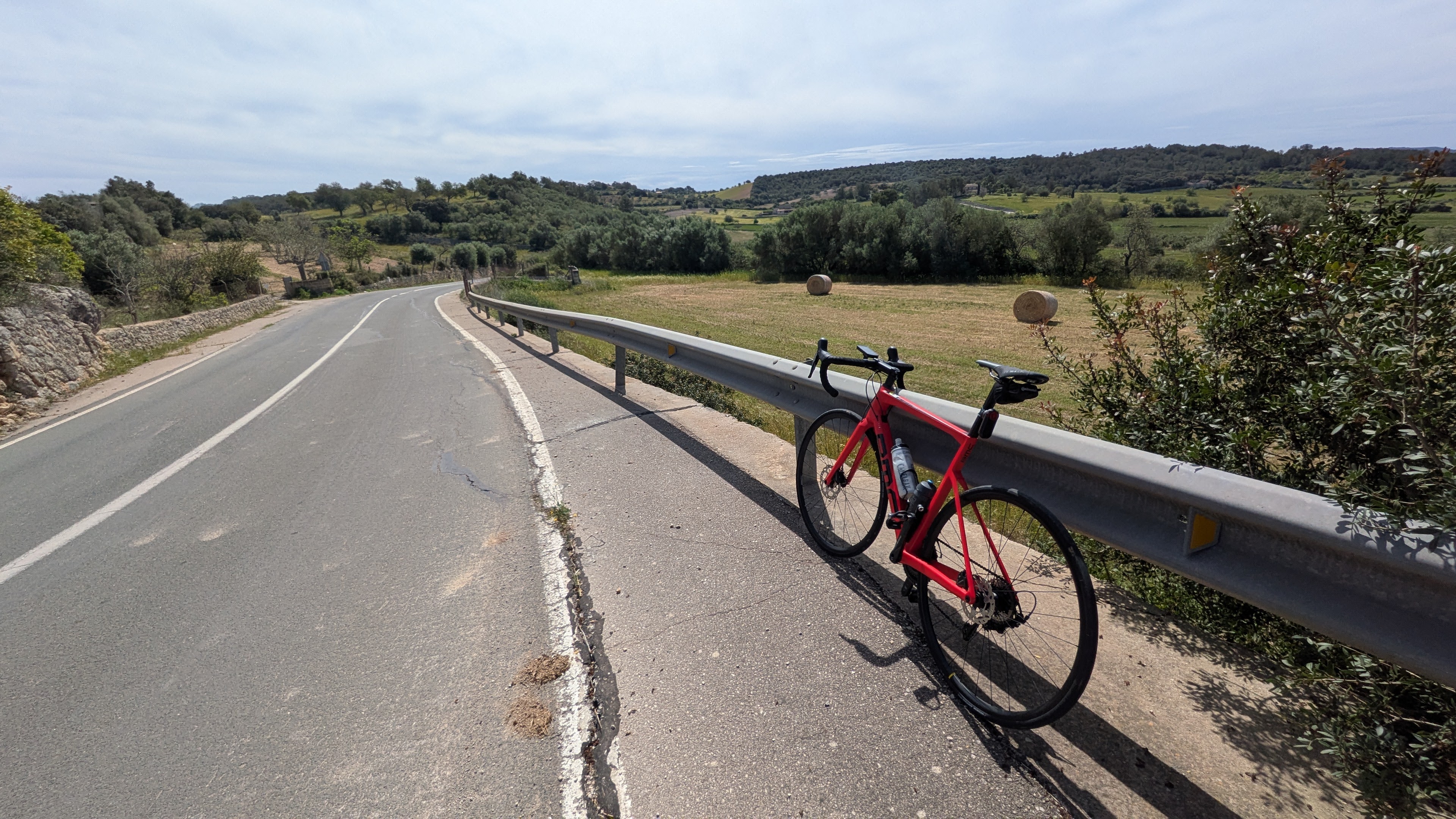


After taking a shot you can see that processing happening in front of your very eyes in the second or two that follows, optimising the exposure, balance, colour and detail. Many phones do this now, of course, but I find Google's computational powers really help to elevate its image results.
It's not quite faultless, mind, with the digital zoom component – offering up to 8x zoom by pinching – not able to match the kind of detail levels at base shooting. The 2x digital is fine, but beyond that you'll hit the limit of what the 'a' series offers. I wouldn't call that a compromise, though, as it's just that for true optical zoom you'll need to pay more for such a feature – which is where the Nothing Phone (3a) Pro might appeal more.
Lighting conditions needn't be perfect for good results either, with low-light countered by those computational and AI brains to lift darker images. I've shot in a whole variety of conditions – from bright sunlight at sea shores to dimly-lit music studios and beyond – and the consistency of results is impressive from the main camera in particular.
Google Pixel 9a review: Verdict

All in all, the Google Pixel 9a is my best-reviewed affordable handset choice of 2025. Google certainly has a fair chunk of competition – from Nothing to Samsung and beyond – but the overall package here feels so on the cusp of flagship that it's an obvious choice.
Sure, the chunky build isn't going to appeal to all, the lack of a true optical zoom camera might make you consider spending more elsewhere, but from a power, longevity and future-proofing perspective, Google has it nailed. The Pixel 9a feels like a breath of fresh air.
Also consider
There's every chance that the full-fat Pixel 9 will be the same price as the 9a now (or lower?). That brings more RAM to an otherwise largely similar model, but could be worthy of your consideration. Otherwise the cheaper Pixel 8a could be a further cost-saving consideration.
If you're in the market for a proper zoom camera, however, then the Nothing Phone (3a) Pro is arguably the more natural choice, delivering a fun design – but less power than Google's proposition.
A side step into Samsung territory will offer you the Galaxy A56, which has a decent software suite – but its shiny finish is a fingerprint magnet and will likely split the crowd. There's a macro lens here, but no proper zoom.
Or if Android isn't for you and Apple's ecosystem is the more appealing option then the iPhone 16e, while 20% pricier at launch, is the closest equivalent on iOS.
Sign up to the T3 newsletter for smarter living straight to your inbox
Get all the latest news, reviews, deals and buying guides on gorgeous tech, home and active products from the T3 experts

Mike is T3's Tech Editor. He's been writing about consumer technology for 15 years and his beat covers phones – of which he's seen hundreds of handsets over the years – laptops, gaming, TV & audio, and more. There's little consumer tech he's not had a hand at trying, and with extensive commissioning and editing experience, he knows the industry inside out. As the former Reviews Editor at Pocket-lint for 10 years where he furthered his knowledge and expertise, whilst writing about literally thousands of products, he's also provided work for publications such as Wired, The Guardian, Metro, and more.
You must confirm your public display name before commenting
Please logout and then login again, you will then be prompted to enter your display name.
-
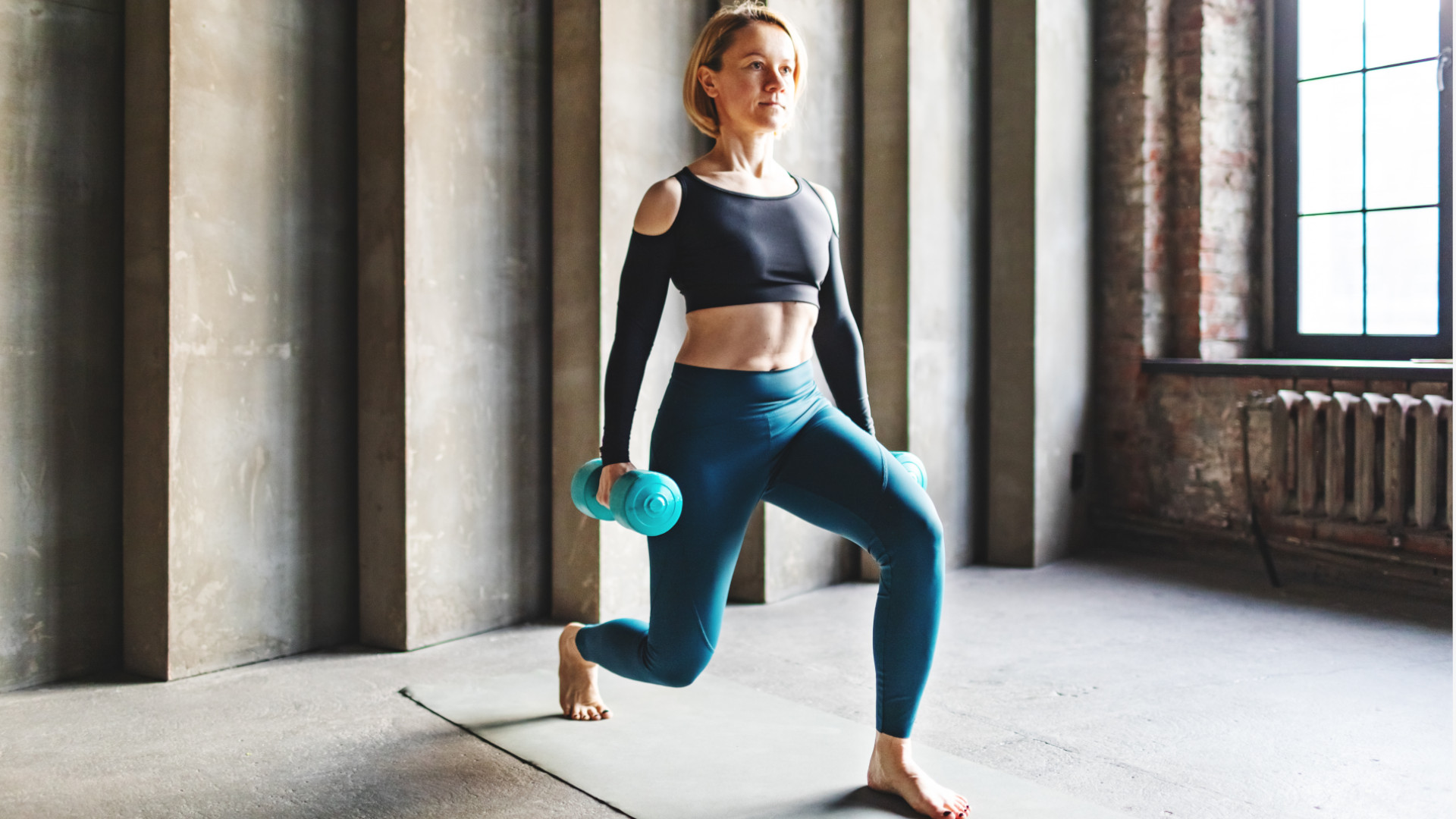 A beginner-friendly dumbbell workout to boost strength and muscle size
A beginner-friendly dumbbell workout to boost strength and muscle sizeGet started on your strength training journey with this simple four-move workout
By Bryony Firth-Bernard Published
-
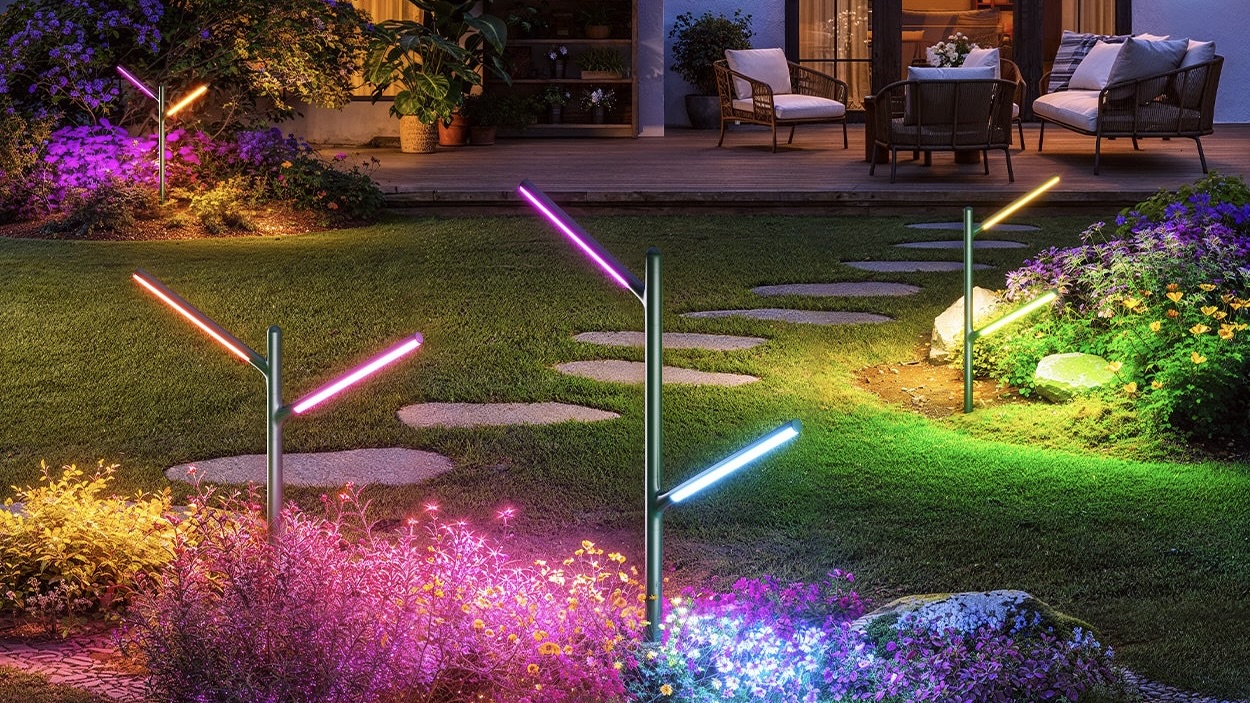 Govee's new Matter-compatible outdoor lights are here – but the design might surprise you
Govee's new Matter-compatible outdoor lights are here – but the design might surprise youWhat do you think?
By Lizzie Wilmot Published
-
 Is this the beginning of the end for double-wall tents?
Is this the beginning of the end for double-wall tents?Ultralight, ultradry, ultra… shiny? Simond’s MT900 might be the smartest tent of the season
By Matt Kollat Published